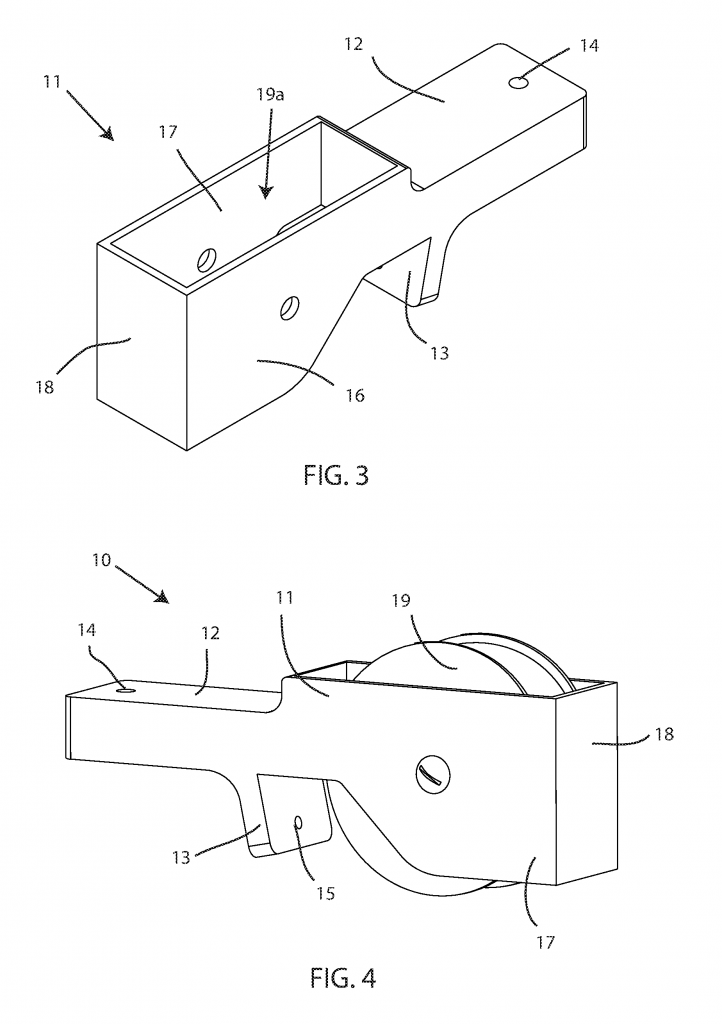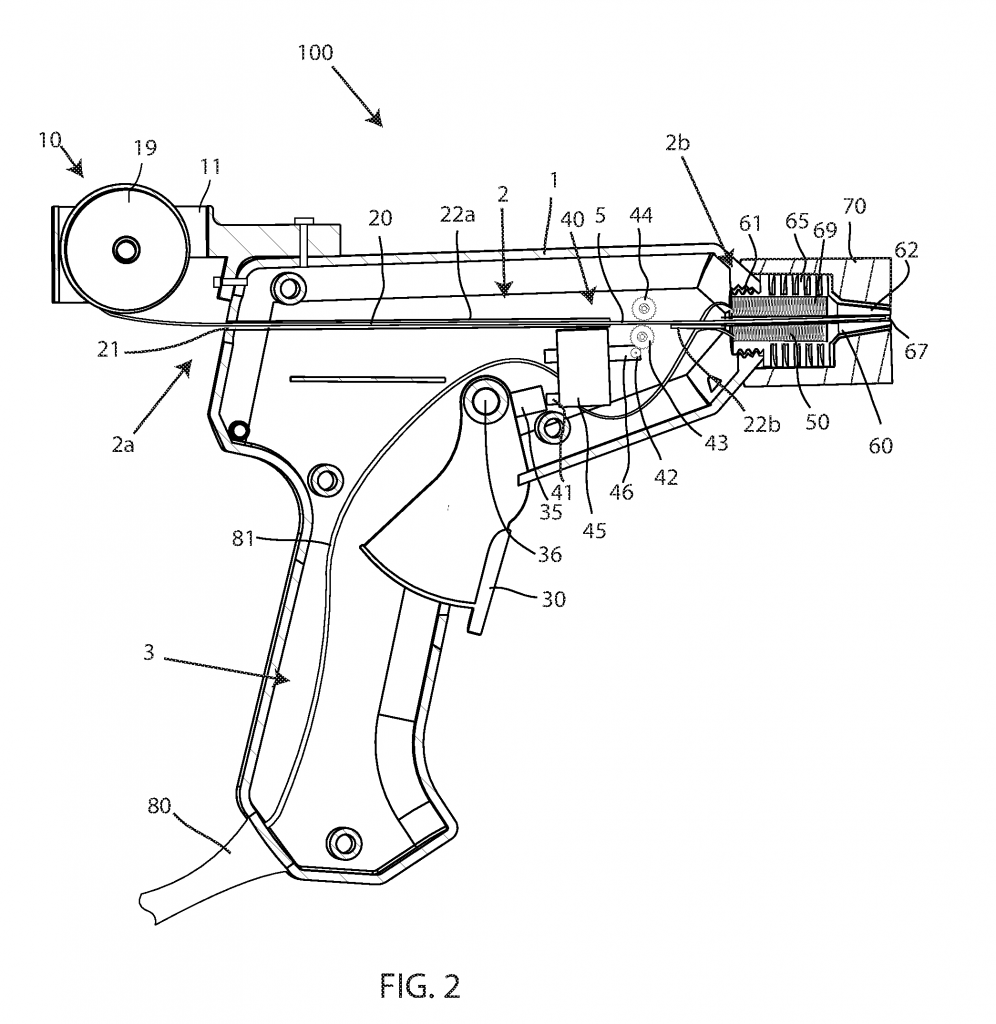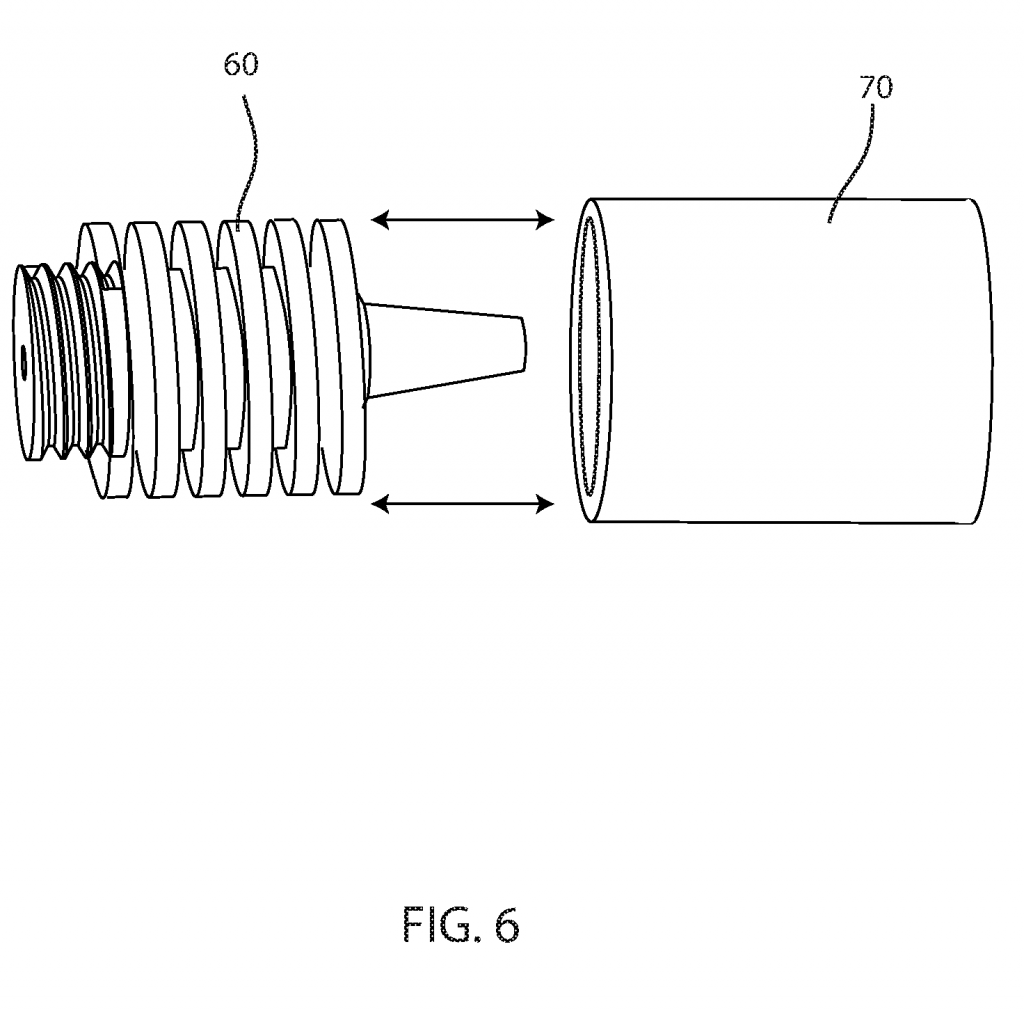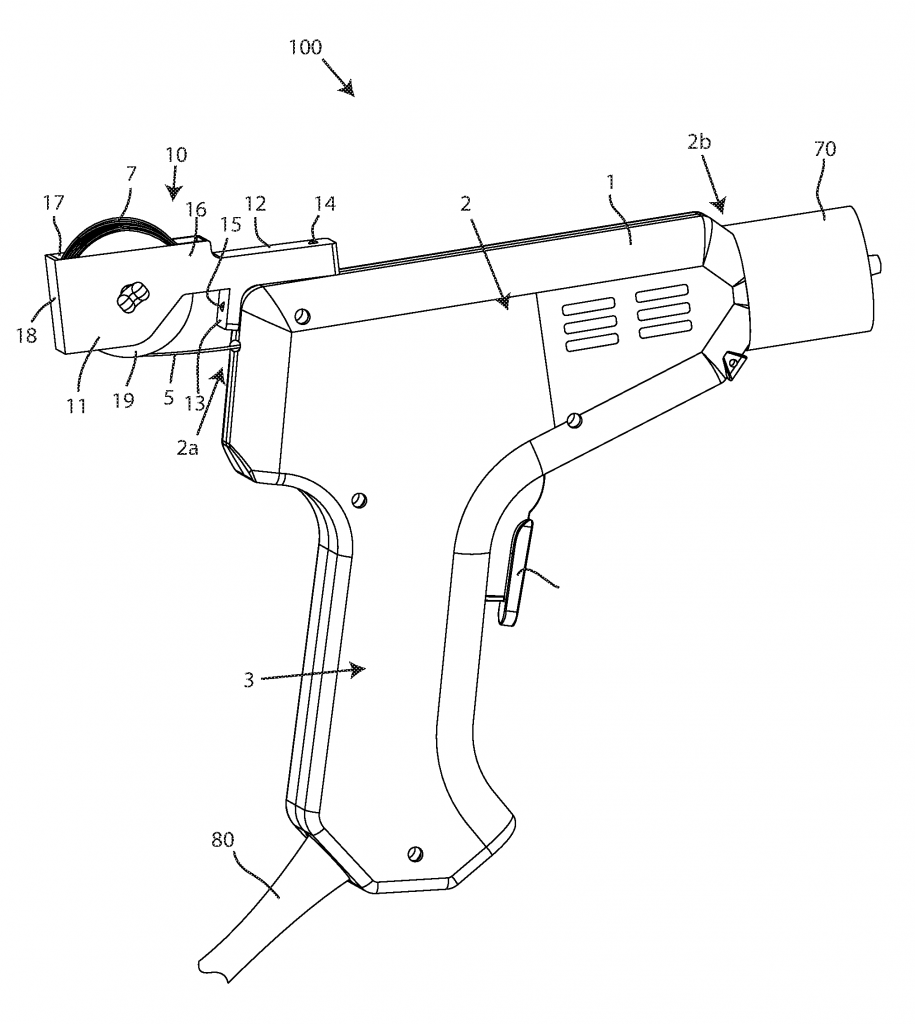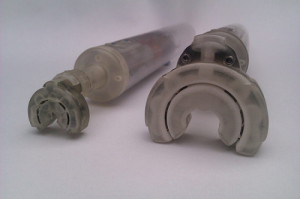In June 2018, Cody Wilson’s non-profit Defense Distributed and the U.S. State Department settled their long-running lawsuit over whether the government can block the Internet distribution of Defense Distributed’s digital blueprints for 3D printing a certain weapon and weapon parts. Since the settlement, state attorneys general and state and U.S. policy makers have been panicking, and Congress has pressured the White House to reverse the settlement, party fueled by misinformation and a basic misunderstanding of the facts.
There are two main issues: can or should the courts or legislatures take any action, and would whatever they do be effective? As an understanding of the facts will show, any court or legislative action cannot stop the dissemination of digital blueprints for 3D printed weapons or the actual 3D printing of weapons. At most, court rulings, laws, and regulations can provide a mechanism for punishing anyone who is caught violating them, or using 3D printed weapons for illegal purposes.
Posting and Re-Posting
In December 2012, Cody Wilson and Defense Distributed posted on the Internet the 3D printable digital blueprints for the “Liberator” pistol, a lower receiver for an AR-15 rifle, an AR-15 magazine, and a trigger guard and grips, all made of plastic. They were downloaded an unknown number of times before the State Department sent its 2013 letter to Defense Distributed, demanding that the digital blueprints be taken down. The blueprints were then downloaded 100,000 times in the 3 days between the government’s demand and the day Wilson took them down.
The June 2018 settlement allowed Defense Distributed to re-post the digital blueprints on August 1, but they reappeared on the Internet on July 27, 2018 and were quickly downloaded at least 2500 times. Defense Distributed took them down again after several States filed a lawsuit against the State Department on July 30, 2018, but they are available today at www.CodeIsFreeSpeech.com, which has been widely reported by the media . The Pennsylvania Attorney General wrongly reported that the 3D printable blueprints blocked by the State Department are for entire AR-15 rifles. The barrel and other parts of such weapons have not been 3D printed and must be made of metal.
The 2013 Ban
The government forced the Defense Distributed takedown under the International Traffic in Arms Regulations (ITAR), which were designed to prevent the spread of weapons of war. The government eventually concluded that the weapon and components that can be 3D printed from Defense Distributed’s digital blueprints do not fall within the ITAR and allowed distribution of the blueprints to resume. If the case had not settled and had gone to trial, the court probably would have reached the same conclusion. Thus, reversing the settlement, as some people urge, probably is not supported by existing law.
What Was Actually Banned?
A closer look at the banned Defense Distributed digital blueprints shows why the government decided they are not for printing weapons of war. The only complete weapon covered by the 3D printable banned blueprints, dubbed “the Liberator,” is a crude, single-shot, .38 caliber, plastic weapon. Anyone who used it in war would lose quickly, and probably make the ultimate sacrifice. It was printed on a 3D printer that cost about $25,000 new (3D printers range in price from a few hundred dollars to $5 million), which Cody Wilson bought used on eBay for about $8000. Cody Wilson’s Liberator was not undetectable; it contained a metal firing pin and a hunk of metal. Anyone who 3D prints the Liberator from the Defense Distributed blueprints could omit the hunk of metal, but probably not the metal firing pin.
Another banned Defense Distributed digital blueprint was for a plastic AR-15 lower receiver. This blueprint was for only a component of such a weapon, not for a complete AR-15 rifle. The government acknowledged in the settlement that non-automatic firearms up to .50 caliber (which do not include AR-15s) are not inherently military equipment, and therefore are not covered by ITAR. This bell will be difficult for the government to un-ring, and is a major obstacle to reversing the settlement, especially because this digital blueprint is for only part of the weapon.
In January 2013 Cody Wilson and Defense Distributed 3D printed a 30-round magazine for an AR-15 rifle. After Defense Distributed posted the digital blueprints on its website in 2012, they were downloaded over 2000 times in 6 days. The digital blueprints for this component were covered by the 2013 ban.
The 2013 State Department takedown order also banned digital blueprints sold with a $1500 CNC (computer numerical control) router called the Ghost Runner. This machine is not a 3D printer. Although it was specifically designed for making untraceable metal lower receivers for AR weapons, the Ghost Runner can make any kind of part, not just gun parts. For this reason, the machine itself was not covered by the ban. But because it was marketed to make ghost gun (i.e., untraceable) parts and came with a USB drive containing the digital blueprints for the Liberator and AR-15 lower receiver and magazine, those digital blueprints were included in the 2013 ban. About 6000 of these machines have been sold.
Since the 2013 ban, Cody Wilson and Defense Distributed have developed other digital blueprints for weapons, not all of which are 3D printable in their present form. The government settlement allows them to be published on the Internet.
Cody Was Never Alone
Although he has received the lion’s share of media attention, Cody Wilson is not the only person to 3D print plastic guns or AR-15 lower receivers, or to post digital blueprints for such weapons and components on the Internet. Digital blueprints for many different 3D printed weapons, components, and accessories have been available on the World Wide Web and the Dark Web, and have been widely disseminated, since 2012.
Because Defense Distributed’s digital blueprints have been in wide circulation since 2012, attempting to ban them would be both futile and impossible today, regardless of any court decisions, laws, and regulations. More importantly, Defense Distributed’s 3D printed weapon, components, and accessories are a drop in a bucket that many people other than Cody Wilson have been filling since 2012.
3D printed plastic weapons and components have come a long way since the Liberator, as have 3D printed silencers (both plastic and metal), ammunition, and bump-fire stocks, made by many people other than Cody Wilson. I survey such weapons, components, and accessories in my Law Enforcement Learning course on 3D printed weapons (sorry, you need a badge to take the course). They are much more advanced than the Liberator and digital blueprints for many of them have been available on the Internet for years.
Are These Weapons Really Undetectable?
In the U.S., it is legal to make guns at home, as long as they are detectable. Thus, as long as Defense Distributed’s (or anyone else’s) digital blueprints call for at least some metal parts, they are not fundamentally different from the designs or blueprints for similar weapons made by traditional manufacturing methods.
All of the known plastic weapons 3D printed to date, including the Liberator, are detectable because they include one or more metal parts (usually at least the firing pin), and of course conventional ammunition is detectable. Digital blueprints for these weapons are also available on the Dark Web, which is 10-20 times larger than the World Wide Web. Most importantly, anyone who can use 3D design software can make and disseminate his or her own digital blueprints for weapons, and they will probably build upon the work that others have done in this area.
Also, whether 3D printed plastic weapons are really undetectable is open for debate. TSA says “3D-printed guns and firearm components have been in circulation for years and have been found on passengers trying to board commercial flights.” Our “officers are trained and on the lookout for 3D guns. . . . We have proven detection capabilities and screening protocols in place.” To date, TSA has detected two 3D printed guns and two 3D printed firearm components.
Even if Defense Distributed’s digital blueprints are used to make undetectable weapons, this is already illegal under the Undetectable Firearms Act. Lawsuits and new laws or regulations will not prevent criminals from making undetectable weapons, but provide a mechanism for punishing them if they are caught doing so.
Away From Control
The Pennsylvania Attorney General recently said of Defense Distributed’s re-posting of the digital blueprints:
Left unchecked, Americans would be able to download a wide range of actual, working guns, including AR-15s, and 3D print their own guns – without serial numbers and without being subjected to the background check system for gun sales currently in place under federal and state law through licensed firearms dealers.
This statement is partly true, except the incorrect suggestion that complete weapons (including AR-15s) can be 3D printed in plastic, or that downloading digital blueprints for weapons and 3D printing them can be checked. Although Defense Distributed developed CAD files for AR-15 rifles, they are not 3D printable files and making AR-15 rifles by traditional methods is not illegal.
Neither the creation nor dissemination of 3D printable weapons blueprints, and the 3D printing of weapons, can be stopped. This is because 3D printers democratize the manufacturing of almost anything “away from control,” which is a concept on which I have written and spoken extensively, both in my book, 3D Printing Will Rock the World, and elsewhere. “Away from control” means making things without anyone knowing about it or being able to control it. Because of the combination of the Internet and 3D printing’s democratization of manufacturing away from control, the creation and dissemination of digital blueprints for weapons and the 3D printing of guns, components, and accessories can be made illegal, but cannot be stopped (just as murder is illegal but laws can’t stop it from happening).
In this regard, Cody Wilson was almost correct when he said that on August 1, 2018 “the age of the downloadable gun formally begins.” In fact, that Age began in 2012 and has been flourishing independently of Cody Wilson and Defense Distributed without much media attention. The Washington State attorney general stated in the Complaint in the Seattle lawsuit that after 3D printed weapons blueprints are online, the “bell cannot be un-rung.” That bell rang in 2012 and has been ringing ever since.
Attorneys General in a Panic
On July 30, the Washington State attorney general filed a federal lawsuit to block the State Department from allowing Defense Distributed to release its digital blueprints for the Liberator and the weapons parts described above. Several other states and the District of Columbia joined in the lawsuit.
On July 31, 2018, Judge Robert Lasnik of the federal district court in Seattle granted a restraining order temporarily barring the release of the digital blueprints. On August 27 the court issued a preliminary injunction extending that order until there is a trial in the case. However, that order is immediately appealable to the Ninth Circuit Court of Appeals.
Washington state attorney general Bob Ferguson called the temporary restraining order “a complete, total victory.” He was wrong for several reasons. That order, and the preliminary injunction, are not based on the merits of the case. At the trial, the Plaintiff States could still lose, or the Ninth Circuit Court of Appeals could reverse the injunction long before then.
More importantly and aside from legalities, the digital blueprints for the Liberator and AR-15 lower receiver that started it all back in 2012 have been downloaded well over 100,000 times and surely have been widely shared. Those digital blueprints were posted on the Defense Distributed website on July 27, 2018 and were downloaded an unknown number of times. Those downloads cannot be recalled and their proliferation cannot be limited or stopped. The Defense Distributed 3D printable blueprints and non-3D printable CAD files are also currently available on other sites. Moreover, the lawsuit and the injunction have no effect on the many other 3D printed guns, components, accessories, and blueprints that have been posted, shared, and disseminated since 2012.
On July 29, Pennsylvania Attorney General Shapiro filed a similar lawsuit in Philadelphia federal court. Defense Distributed agreed not to disseminate the digital blueprints in Pennsylvania, pending a formal court hearing. Due to the nature of the Internet, this is like agreeing that clouds will not pass over the state. This lawsuit will provide a forum for Defense Distributed to test not only the applicability of the First and Second Amendments, but also the Constitutionality of the Pennsylvania laws asserted against Defense Distributed. In November 2013, Philadelphia made it illegal to make or own 3D printed guns.
Legal Mumbo Jumbo
The August 27 preliminary injunction order is a great example of federal legal procedure mumbo jumbo being used either to pull the wool over a court’s eyes, or to deal with a political hot potato. For example, Judge Lasnik said in the August 27 preliminary injunction order:
“Forcing the federal defendants [the State Department] to evaluate the effect of the proposed delisting [the State Department’s alleged removal of the Defense Distributed digital blueprints from the U.S. Munitions List] on world peace, national security, and the foreign policy of the United States . . . may also prompt a reconsideration of the decision to remove the CAD files from the USML.”
No one can seriously contend that the Liberator is a weapon of war and the States face an uphill battle to prove that AR-15s are military equipment under current law. More importantly, anyone who believes the Defense Distributed digital blueprints are a threat to world peace, national security, and foreign policy is either misinformed or bowing to political pressure. This judge took the safe route by issuing the injunction. The Ninth Circuit Court of Appeals will now need to make the hard decision.
Lawsuits are Swords with Two Edges
Unless these lawsuits are settled, they will eventually go to trial, and could have consequences unintended by the States that filed them. The courts will probably conclude that there is no legal basis under federal law for blocking the distribution of the digital blueprints on a nationwide basis.
The lawsuit also contains a Tenth Amendment argument (“The powers not delegated to the United States by the Constitution, nor prohibited by it to the States, are reserved to the States respectively, or to the people.”). The Court will probably conclude that the States are free to enact any laws they wish, as long as they don’t conflict with the U.S. Constitution, and that the federal government is free to decide where ITAR does and does not apply.
More importantly, the settlement between Defense Distributed and the government prevented the court in that case from addressing the thorny issue of whether blocking the distribution of the blueprints violated the First and Second Amendments. The newly filed lawsuits give Defense Distributed and the pro-guns lobby a forum for having these issues decided, possibly in their favor. My money is on Defense Distributed. In fact, the Seattle judge seemed to agree when it said in the preliminary injunction order:
The Court declines to wade through these issues based on the limited record before it and instead presumes that the private defendants have a First Amendment right to disseminate the CAD files.
After the courts work through all of the procedural mumbo jumbo and the First, Second, and Tenth Amendment arguments, they will probably conclude either that the State Department had the authority to settle the lawsuit and to allow the Defense Distributed digital blueprints to be re-posted, and that there is no legal and Constitutional basis to restrict the dissemination of these 3D printable weapons blueprints, or the 3D printing of this weapon or components.
Presidential Tweet and Possible New Federal Laws
On July 31, President Trump tweeted that allowing the distribution to resume “doesn’t seem to make much sense,” suggesting that he might instruct the State Department to reverse the settlement. However, the President can’t make ITAR apply if it does not.
U.S. Senators Edward Markey (D-Mass) and Richard Blumenthal (D-Conn) submitted a bill to block the online dissemination of 3D printable digital blueprints. If enacted, this legislation will probably be tested under the First and Second Amendments, but would be inherently unenforceable for the reasons I discuss.
Senator Chuck Schumer (D-NY) said “3D printers are a miraculous technology that has the potential to revolutionize manufacturing, but we need to make sure they are not being used to make deadly, undetectable weapons.” Senator Schumer is correct: 3D printers are revolutionizing manufacturing and creating jobs. But he is wrong (as are Senators Markey and Blumenthal) that it is possible to prevent 3D printers from making guns, although it could me made illegal to do so (the Constitutionality of such a law would be a separate question). He was also wrong when he said that “This online site shows you, how at your home, with a simple 3D printer, you can make a plastic AR-15, an AR-10, a very dangerous semi-automatic assault-style weapons out of plastic in your own basement.” Only an AR-15 lower receiver can be 3D printed in plastic, with a home printer.
Conclusion
Any efforts by the States or the federal government to prevent Defense Distributed’s digital blueprints from being further disseminated are probably not good uses of resources because the designs are easily duplicated, are available from other sources, and are less sophisticated than other 3D printed weapons, components, and accessories, and their digital blueprints, which are available on the Internet. It is also impossible to prevent a 3D printer from printing a weapon. As attorney Kelsey Wilbanks recently wrote “obtaining the digital instructions to print and assemble an undetectable and untraceable 3D printed gun will probably soon be as simple as ordering and assembling home furniture.” In other words, the cat can’t be put back in the bag.
John Hornick was a partner in the Washington, D.C. office of the Finnegan IP law firm (one of the largest IP firms in the world) for 25 years. John founded Finnegan’s 3D Printing Working Group, frequently speaks and writes on 3D printing, and is recognized as a thought leader in this space. He is the author of the book, 3D Printing Will Rock the World, which won a Silver Award from the Nonfiction Authors Association, has been called a “must-read” offering “rare insight into how 3D printing is redefining what can be designed and manufactured,” and was selected for the U.S. Special Operations Command’s 2017 Reading List (think Delta Force and Navy Seals) in the Disruptive Technology Category https://jsou.libguides.com/readinglists. His articles and videos have been widely published. He was the only IP attorney selected by the U.S. Comptroller General Forum on Additive Manufacturing (which was the basis of a report to Congress). John has served as a juror for the International Additive Manufacturing Award. John also educates the law enforcement community on 3D printing-related risks and benefits. The opinions expressed in this article are solely his own.
